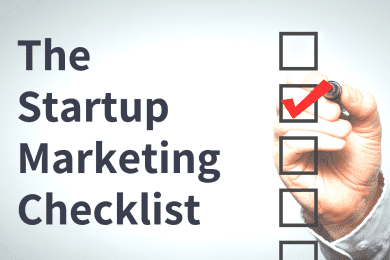Branding is an integral part of any business’s marketing strategy. A well-defined and cohesive brand identity not only helps you stand out in a crowded marketplace but also fosters trust and loyalty among your target audience.
To ensure your brand is on the right path to market success, you should begin with a comprehensive branding checklist.
In this article, we will guide you through a 10-step branding checklist to help your business thrive and create a powerful presence in the market.
1. Define Your Brand Identity
The first and foremost step in building a strong brand is defining your brand identity. This includes understanding your mission, vision, values, and unique selling propositions.
Ask yourself the following questions:
- What does your brand stand for?
- What are your core values and beliefs?
- What sets your business apart from competitors?
- Who is your target audience?
Answering these questions will help you create a clear and concise brand identity that forms the foundation of your branding efforts.
2. Conduct Market Research
In-depth market research is crucial to understanding your industry, competitors, and target audience. It helps you identify market trends, consumer preferences, and gaps that your brand can fill.
Collect data on:
- Market trends and dynamics
- Competitor analysis
- Consumer demographics and psychographics
- Emerging opportunities and threats
Market research is an ongoing process that provides valuable insights to refine your branding strategy.
3. Craft a Unique Brand Proposition
Your Unique Selling Proposition (USP) is what makes your brand stand out. It’s the reason why consumers should choose your product or service over others. Your USP should be clear and easily communicable to your target audience.
Whether it’s quality, price, innovation, or exceptional customer service, your USP should be the focal point of your branding strategy.
4. Create a Memorable Brand Name and Logo
Your brand name and logo are the visual and verbal representations of your brand. Ensure your brand name is unique, easy to remember, and relevant to your business.
Similarly, your logo should be distinctive, simple, and capable of conveying your brand’s values and identity at a glance. Investing in professional design is often worth the expense.
5. Develop a Strong Brand Voice
Consistency in your brand’s communication is vital. Your brand voice reflects your personality, values, and the way you interact with your audience.
Whether your brand voice is formal, friendly, humorous, or authoritative, it should be consistent across all marketing channels, from your website and social media to your customer service interactions.
6. Design a Cohesive Visual Identity
Your visual identity encompasses more than just your logo. It includes colors, typography, and design elements that should be consistent across all brand materials.
Make sure your print assets are set up crisp and professional, as this reflects largely on your brand. Use professionals to create the best brand collateral.
A cohesive visual identity reinforces your brand recognition and leaves a lasting impression on consumers.
7. Build a Strong Online Presence
In today’s digital age, your online presence is often the first point of contact with potential customers. Create a user-friendly website, optimize it for search engines, and maintain active profiles on relevant social media platforms.
Consistent and engaging online branding helps you reach a broader audience and connect with customers effectively.
8. Leverage Content Marketing
Content marketing is an effective way to communicate your brand’s values, expertise, and personality.
Create valuable and informative content that resonates with your target audience. Whether it’s blog posts, videos, infographics, or podcasts, content marketing establishes your brand as an authority in your industry.
9. Deliver Exceptional Customer Experiences
Your branding is not just about visuals and messaging; it’s also about the experiences your customers have with your brand.
Ensure that your customer service is top-notch and consistent with your brand values. Positive experiences lead to customer loyalty and word-of-mouth marketing.
10. Measure and Adjust
Finally, regularly assess the effectiveness of your branding efforts. Monitor key performance indicators such as website traffic, social media engagement, conversion rates, and customer feedback. Use this data to adjust your branding strategy as needed.
In Conclusion
A well-executed branding checklist is the foundation of a successful marketing strategy. It establishes your brand identity, sets you apart from competitors, and resonates with your target audience.
By defining your brand, conducting market research, creating a strong brand proposition, and ensuring consistency in your brand voice and visual identity, you can build a brand that thrives in the market.
Success in branding doesn’t happen overnight; it’s an ongoing process that requires continuous effort, adaptability, and a deep understanding of your audience.
My name is Sardar Ayaz a professional content writer and SEO expert having Proven record of excellent writing demonstrated in a professional portfolio Impeccable grasp of the English language, including idioms and current trends in slang and expressions. I have ability to work independently with little or no daily supervision with strong interpersonal skills and willingness to communicate with clients, colleagues, and management.
I can produce well-researched content for publication online and in print, organize writing schedules to complete drafts of content or finished projects within deadlines. I have 12 years’ experience to develop related content for multiple platforms, such as websites, email marketing, product descriptions, videos, and blogs.
I use search engine optimization (SEO) strategies in writing to maximize the online visibility of a website in search results











